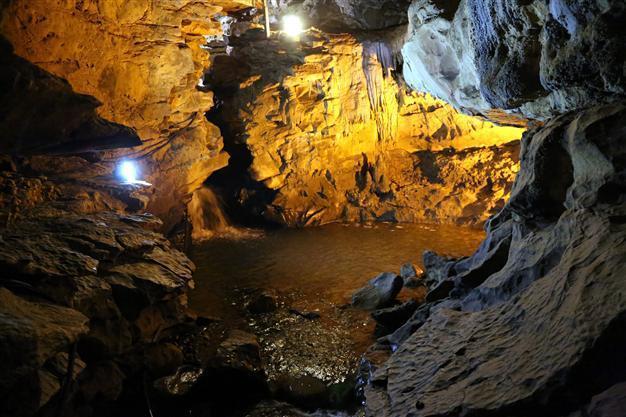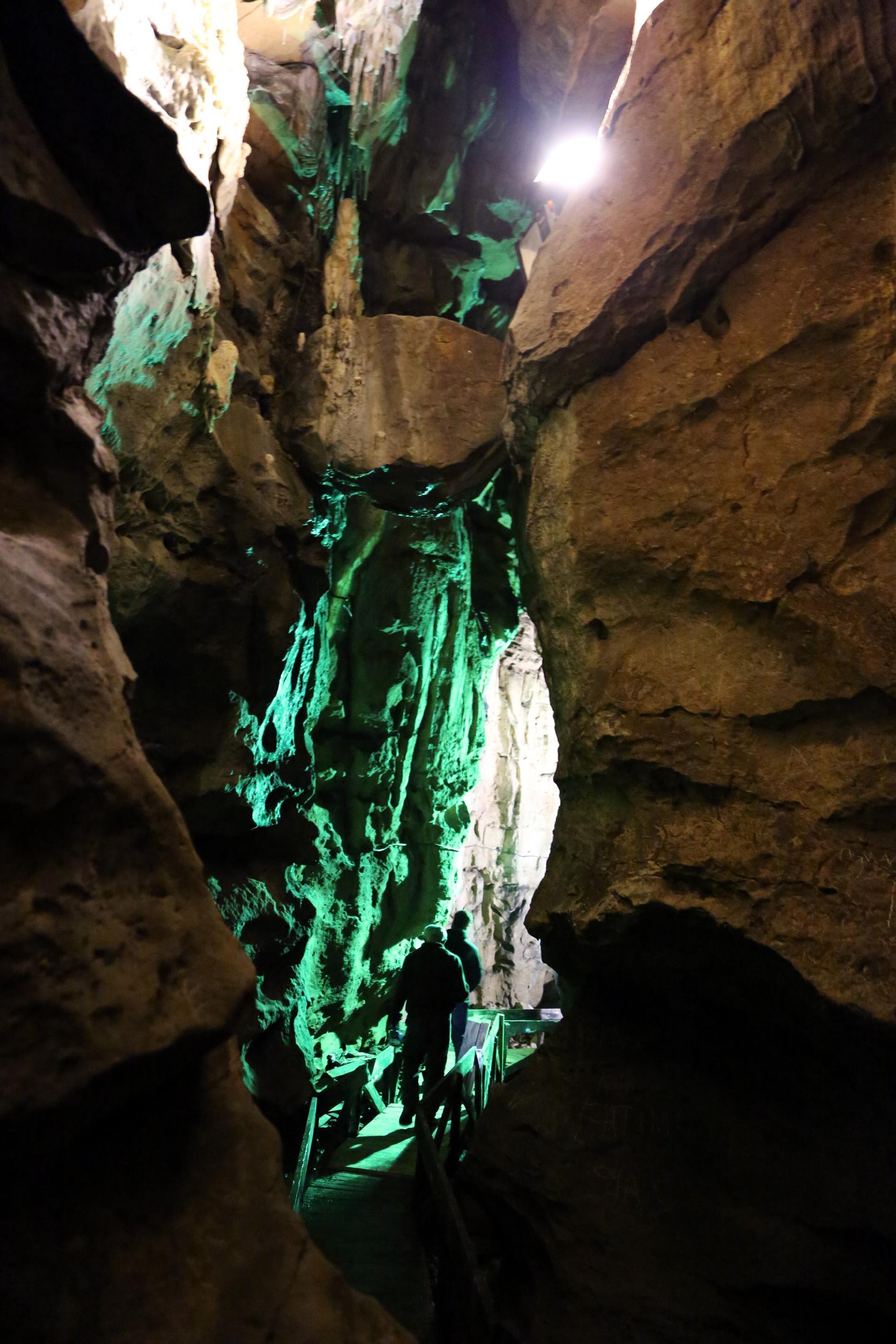Mistery of Trabzon's hidden haven still not solved
TRABZON - Anadolu Agency

The flamboyant cavern is estimated to have been formed over 8 million years ago. AA photo
The Çal Cave in the Black Sea province of Trabzon, which is known as one of the world’s largest caves, of which only eight kilometers have been so far reached, remains a mystery.The cave, which is located in Düzköy district’s Çal area 1,050 meters above sea level, draws attention with its stalactites and stalagmites, as well as its stream, small lakes and waterfalls. Following an examination carried out many years ago by a committee from the Karadeniz Technical University to solve the cave’s mystery, the Trabzon Special Provincial Administration constructed a wooden walking route and added lightning to the cave and opened it to visitors in 2003. Since then the cave, has been visited by tens of thousands of local and foreign tourists.
The cavern is divided into two sides 200 meters after its entrance. It has a 150-meter walking route on its left side and a 400-meter route on the right side. A fault line on the ceiling of the cave can be clearly seen by visitors, but other parts of the cave have not been explored so far. These parts are closed to visitors because they have no lighting or walking route.
 The cave is estimated to have been formed over 8 million years. Nedim Şener, who manages the cave and has traversed for up to 16 hours with a flash light to attempt to solve the cavern’s mystery, said the cave had been open to visits to increase the income level of the region.
The cave is estimated to have been formed over 8 million years. Nedim Şener, who manages the cave and has traversed for up to 16 hours with a flash light to attempt to solve the cavern’s mystery, said the cave had been open to visits to increase the income level of the region. He said nearly a one-kilometer part of the cave was open to visits. “I want to increase this part to 1.5 kilometers because the closed parts are where magnificent things abide. We have walked for 16 hours to determine the length of the cave and reached only eight kilometers of it. There are lakes, waterfalls, gaps and bats in these closed parts. You need to leave traces when walking in order to get back.”
Şener said the cave was 300-400 meters underground, cool in the summer and hot in winter.
“According to university research, the reason why this place has beautiful weather is water comes from the cracks on the walls. It provides an air stream. The cave is a water channel and it is 8 million years old,” he said. Provincial Culture and Tourism Director İsmail Kansız said they had not touched the natural structure of the cave and made improvements for visitors to move easily. “The end of the cave has not been able to be discovered yet.”
















